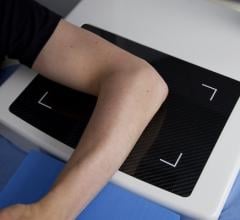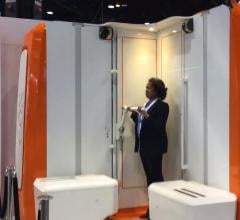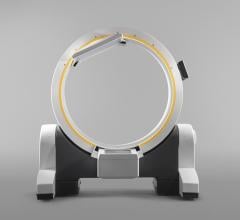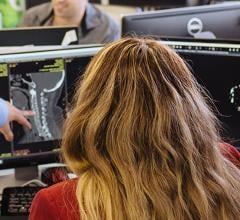
January 23, 2017 — The National Basketball Association (NBA) and GE Healthcare Orthopedics and Sports Medicine Collaboration have issued a new call for proposals (CFP) focused on bone stress injuries (BSI), a frequent and debilitating injury for both the elite and the everyday athlete. The collaboration simultaneously announced the latest round of winning research proposals that address myotendinous injuries, specifically targeting strains, tears, ruptures, or pulls of the hamstring and calf.
The NBA & GE Healthcare Orthopedics and Sports Medicine Collaboration was established to fund research that addresses the prevention, diagnosis and treatment of musculoskeletal injuries* affecting NBA players and everyday athletes. Through the funded research, the collaboration aims to increase understanding of the mechanisms of injury to reduce the impact of future injuries by investigating prevention and rehabilitation programs and developing new and improved tools for diagnosis and treatment. The collaboration is directed by a Strategic Advisory Board, led by John DiFiori, M.D., the NBA’s director of sports medicine, and an NBA & GE Healthcare Steering Committee.
The latest call for research proposals is aimed at advancing the understanding of prevention, diagnosis, treatment and recovery of BSI in elite and everyday athletes. BSI can impair performance, limit playing time, disrupt an athletic career and cause ongoing risk of re-injury.
Specific areas of research interest for this CFP include:
Advancements in imaging to improve prevention, diagnosis and/or treatment of BSI – including imaging techniques to improve the understanding of bone health and risk factors for BSI and re-injury; and
Prevention and management of BSI - including quantifiable exposure factors, metabolic factors, bone quality thresholds and biomechanical risk factors, and epidemiological determinants.
Additionally, as part of their collaboration, the NBA and GE Healthcare announced the awardees of four research proposals selected from investigators across the globe to address acute myotendinous injuries.
“Myotendinous injuries are a common issue among basketball players at all levels of the game — from NBA players to the athlete joining a local pick-up game,” said DiFiori. “While there are prevention programs prescribed for varying levels of play, we are working to increase our understanding of the best techniques for clinical assessment and choices of imaging modalities to improve health outcomes and limit the impact on athletic performance for athletes at all levels.”
Using a competitive application process with a rigorous scientific review, leading academic and healthcare institutions were selected from the following locations:
University of Newcastle, Australia (Dr. Suzi Edwards) The HAMI Study: Investigating Hamstring and Adductor Myotendinous Injury Risk Factors in Basketball.
Edwards and her team will study top male Australian basketball players to determine the role of biomechanical (how a person moves) and neural (how the brain signals muscles) factors in muscle injuries. This novel multidisciplinary research may lead to improved injury prevention and rehabilitation programs for athletes by increasing our understanding of how an athlete runs, how muscle structure changes, and how an injury alters brain signals to muscles.
Academic Medical Center, Amsterdam (Dr. Johannes Tol) Game changing innovative sports research: The Basketball and Muscle Injury (BAMI) study.
The BAMI study targets preventing hamstring and calf muscle injuries and re-injuries. In the first of three separate studies, researchers in Amsterdam will use magnetic resonance imaging (MRI) to examine what actually goes on within injured muscles to help in preventing re-injury. The second and third studies will use strength testing and MRI to determine which exercises are the best for preventing hamstring and calf muscle injuries.
University of Wisconsin-Madison (Dr. Bryan Heiderscheit) Clinical, Biomechanical, and Novel Imaging Biomarkers of Hamstring Strain Injury Potential in Elite Athletes.
Investigators from The University of Wisconsin will conduct a prospective longitudinal study of high-level athletes to improve risk assessment for hamstring strain injuries. Athletes will be monitored for exposure and injury throughout training and competition, with injured athletes monitored with diffusion tensor magnetic resonance and shear wave ultrasound imaging during and after their rehabilitation period. Findings from this study may improve injury risk assessment and establish objective criteria to assess the risk of re-injury upon returning to play.
The Mayo Clinic (Dr. Timothy Hewett) Comparative Effectiveness of Hamstring Muscle Strain Injury Prevention Programs.
Hewett and his team at the Mayo Clinic will investigate the effectiveness of hamstring muscle strain injury prevention programs in 1,000 high school basketball athletes. They plan to study how these programs impact flexibility, muscle stiffness, strength and power. They will use an advanced ultrasound imaging technique (shear wave elastography) to measure muscle stiffness and determine if it can be used to predict future hamstring injuries.
Research proposals are being accepted here. This CFP will award a total of up to $1.5 million over a three-year period to support research addressing important unanswered questions regarding BSI prevention, diagnosis and treatment. The maximum amount for an individual submission is $300,000 including direct and indirect costs for the entire research period. Smaller, focused and impactful projects requiring less support are strongly encouraged.
The deadline to submit BSI research proposals is April 17, 2017.
For more information: www.gex.brightidea.com


 July 31, 2025
July 31, 2025 









